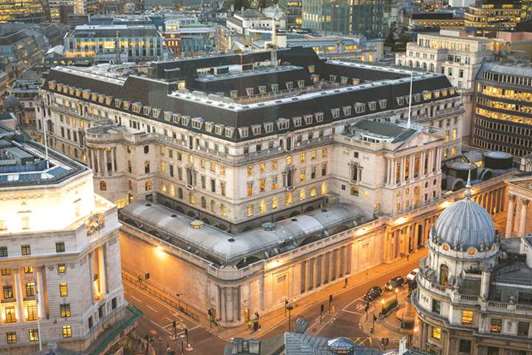The Bank of England kept interest rates steady yesterday but two policymakers unexpectedly voted for a hike, boosting confidence among investors that borrowing costs will rise in May for only the second time since the 2008 financial crisis.
Ian McCafferty and Michael Saunders — the first officials to call for rates to rise last year — said it was now time to push them above the emergency level at which they have sat for most of the past decade.
The world economy is growing at its fastest since the financial crisis, helping Britain at a time when it is suffering from uncertainty about Brexit.
The United States Federal Reserve on Wednesday raised rates for the sixth time since the financial crisis.
Even the European Central Bank — which is still struggling with anaemic price growth — has its eye on phasing out its massive bond purchases.
The BoE’s Monetary Policy Committee voted 7-2 to keep rates at 0.5% but said “ongoing tightening” was likely to be needed to return inflation, which stood at 2.7% in February, back to its 2% target.”The message from the Bank of England to borrowers couldn’t really be clearer: get ready for higher rates now,” said Ed Monk of fund managers Fidelity International.
Financial markets were relatively indifferent, though sterling did briefly touch a nine-month high against the euro.
Investors had priced in a 70% chance of a May rate rise even before yesterday’s statement, and they see a similar chance of an additional rate increase later in 2018.
Last month BoE Governor Mark Carney and his colleagues surprised markets by saying rates might need to go up faster than expected, due to a strong global economy and an inflation rate that is running uncomfortably above target.
Yesterday, the BoE said economic developments since then broadly backed up this view. “Given the prospect of excess demand over the forecast period, an ongoing tightening of monetary policy over the forecast period would be appropriate to return inflation sustainably to its target,” the BoE said.
The BoE raised rates for the first time in over a decade in November, reversing an emergency cut when the economy appeared to be going into shock after Britain’s June 2016 Brexit vote.
Since then, growth has held up better than expected — though last year the British economy lagged a global upturn as high inflation caused by sterling weakness since the referendum ate into households’ disposable income.
No economist polled by Reuters expected the BoE to repeat November’s 25-basis-point rate rise yesterday, and only a minority expected Saunders or McCafferty to vote for a rise.
One major stumbling block to a May rate rise was removed this week when Prime Minister Theresa May agreed a transition deal with the European Union to leave post-Brexit trade ties between Britain and the bloc unchanged until the end of 2020.
The BoE said this had boosted sterling. Data on Wednesday showed pay growth at its highest since 2015, which the BoE said bolstered policymakers’ certainty that domestic cost pressures were building, hampering inflation’s return to target.
Also on Wednesday, the government announced a 6.5% pay rise for more than a million public health workers over the next three years, breaking with seven years of pay restraint.
The growth picture in Britain is more muted.
Last month the BoE forecast growth of 1.8% this year and next — well below Britain’s historic average — and last week government forecasts were gloomier, with Brexit dragging on the outlook.
The BoE said heavy snow in March was likely to cause first-quarter growth to slow to 0.3%, but would not affect the medium-term outlook for growth.

A view of the Bank of England building in London. The BoE’s Monetary Policy Committee voted 7-2 to keep rates at 0.5% but said u201congoing tighteningu201d was likely to be needed to return inflation, which stood at 2.7% in February, back to its 2% target.


